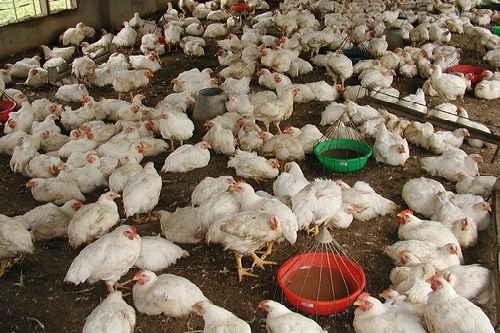Chickens and other domestic birds can be managed under three different systems depending on production objectives and the availability of financial resources. These management systems are free-range, semi-intensive and extensive systems. They are described as follows.
1. Free-range or Extensive System
Under this system, you simply allow the birds to fend for themselves while they are provided with a very small quantity of feed, grains or kitchen waste. These birds will be allowed to roam freely to look for food. They may be seen scratching the soil trying to find insects or seeds to eat, and when it is evening, they find a place to rest. While this system is relatively cheap, the chickens won’t perform well. Their growth is very slow, and they are vulnerable to diseases, theft and predators. Don’t use this method if you want to get the best out of your chickens.
2. Semi-intensive System
Under this management system, the birds are kept in a house or pen and provided with everything they need: feed, water, vaccines and drugs. Additionally, an enclosed outdoor area attached to the main pen is provided for the birds to roam freely or graze on veggies. While this system is significantly better than the free-range system, it requires spending more on housing and requires more attention to the welfare of the birds. Besides, the birds are not protected from predators but they perform very well in terms of growth and egg production.

3. Intensive System
This is the most common management system adopted by most commercial poultry farmers. The birds are kept indoors or inside a pen where they will be provided with nutritious feed, clean water, lighting and medications. They get 100% attention and care for them to perform excellently. So if there is an issue or problem, it is easy for the farmer to intervene and resolve it.
The intensive system is quite expensive as it requires building a comfortable house or pen for the birds. However, the building costs depend on the kind of materials used for constructing the house. Bricks are costlier than wood. In addition, waste or litter management is very paramount to avoid having a messy and odorous environment that is hazardous to both chickens and farmers.

The intensive system can involve raising chickens in wooden or metal cages, on a deep-litter or floor, or in an elevated pen or house. The most important things are ventilation (air circulation), spacing, stocking density and feeding and watering systems. When these are adequately provided, the birds will do just fine and give you their best performance.
As mentioned earlier, your goal or objective and financial capacity will determine the type of management system to choose. For instance, if your objective is to raise chicken for subsistence purposes while you don’t have much money, then the free-range or extensive system should be adopted. Also, if you are interested in keeping chickens as a business, you should choose the intensive system. If you’d like to do organic chicken farming and you have enough money, the semi-intensive system is the most ideal system to get great results.




